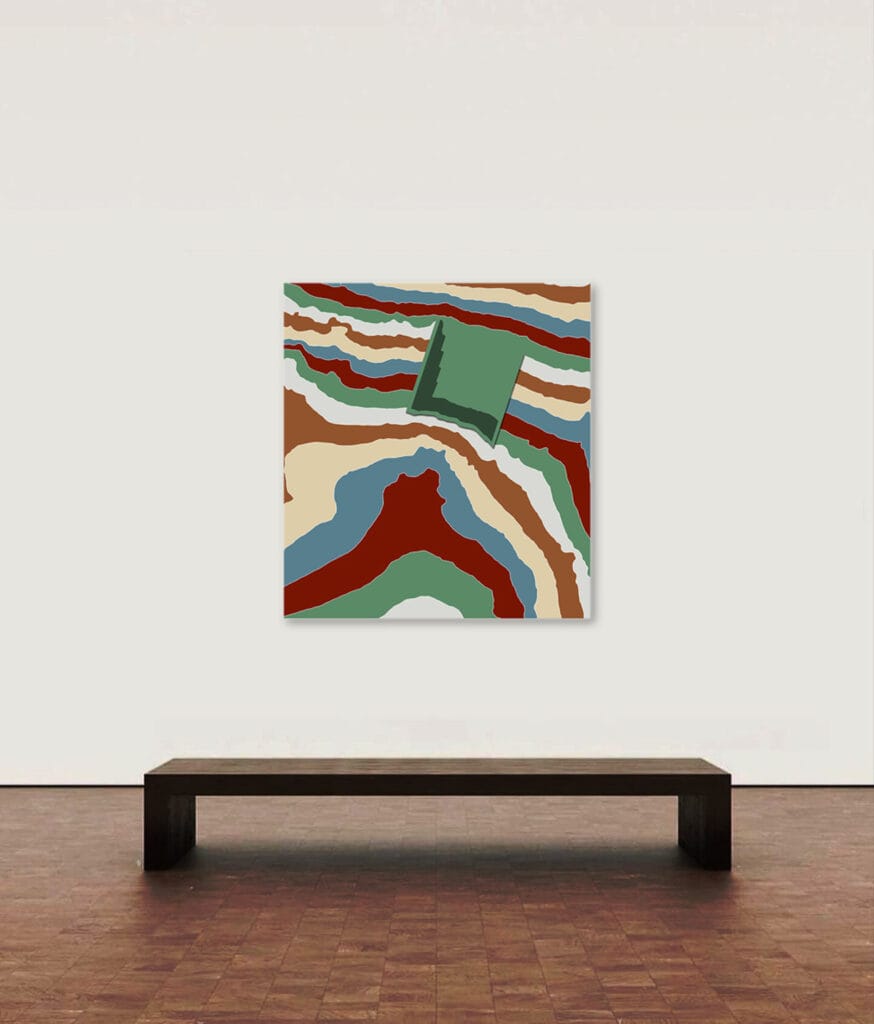TopoArtic: A New Horizon in Contour Art
“TopoArtic: A New Horizon in Contour Art”
Introduction
TopoArtic, crafted by the Saudi architect and artist IBRAHIM NAWAF JOHARJI INJ Architects, is an exploration of Earth’s natural beauty captured through the lens of topographic art. Rooted in the organic contours of mountainous landscapes, TopoArtic is more than a design; it’s a unique visual language that reveals the Earth’s genetic imprint. With each layer and contour line, this project merges mathematical precision with organic artistry, blending the realms of architecture and art in a way that resonates with Earth’s primal beauty.
The Mathematical Foundation of Topography
At its core, TopoArtic employs the scientific rigor of topographic mapping, where contour lines are calculated mathematically to represent elevation changes. This process involves projecting the height (z) at various points on a plane (x, y), visually “averaging” terrain levels to form a 3D-like surface. These calculations aren’t merely technical; they serve as the artistic framework for TopoArtic, where each contour line symbolizes a specific elevation, forming a geometric fingerprint of natural landscapes.
Contours as Earth’s Genetic Code
TopoArtic is built on the idea that contour lines are akin to Earth’s genetic code, with each mountain and valley forming a unique, unrepeatable pattern. Unlike standardized designs, no two contours are identical, making each piece in the series a distinct expression of organic architecture. This genetic diversity in TopoArtic mirrors nature’s own language, highlighting the Earth’s intrinsic patterns through a carefully crafted sequence of curves and elevations. Every line becomes a building block in a visual DNA, capturing the essence of a living landscape.

Color as a Visual Narrative
While traditional topographic maps use color gradients to represent elevation, TopoArtic reinterprets this approach to make color a visual story. Here, colors are more than symbols; they are waves that bring the contours to life, creating a “visual imprint” of the mountain. Each hue is intentionally selected to evoke depth, with the color waves revealing the mountain’s shape and structure as if it were a living, breathing entity. The colors flow across the contours, forming a visual language that goes beyond representation and enters the realm of narrative.
Cutting and Filling: The Mountain’s Resilience
In architecture and landform modification, the techniques of “cut and fill” involve reshaping natural landscapes to serve human needs. TopoArtic reflects this dynamic relationship by simulating how contours respond to human intervention. Each contour line in this project is a testament to the mountain’s resilience, as it endures the impact of human presence while retaining its core identity. Through this technique, TopoArtic presents nature as both adaptable and steadfast, balancing the power of Earth with the precision of design.
A Hypothesis of Continuity
TopoArtic embodies a hypothesis: despite human intervention, the mountain retains its essence. Whether for construction, material extraction, or other purposes, the mountain’s “genetic print” remains intact. TopoArtic presents this balance between humanity’s touch and nature’s resilience, illustrating that the Earth can adapt while preserving its organic beauty. It is a celebration of the relationship between art and environment, conveying an organic vision of architecture that honors the Earth’s natural architecture.
Conclusion
TopoArtic, through the artistic manipulation of contours, offers a fresh perspective on Earth’s inherent beauty. INJ has created an art form that connects viewers to the mathematical and organic aspects of our planet’s topography. By blending color, contour, and form, TopoArtic unveils a new narrative within the landscape, revealing how art can express Earth’s intrinsic structure and inspire a profound connection to the natural world.







